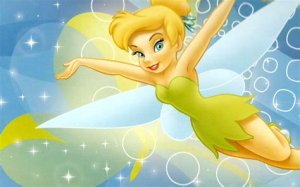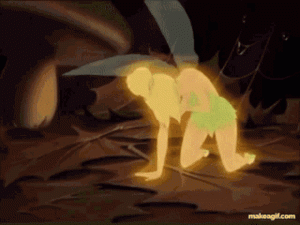Luxury Whisky & The Tinkerbell Theory

I received a mail from one of my editors recently. She’d kindly sent me details of an expensive whisky (no names), wondering if I might like to cover the story. It was followed almost immediately by a PS, ‘Trying to get my head around how this can be worth $25k…’ The ellipsis says it all.
I replied, ‘it is only worth it if someone pays the asking price.’
Within that are two possibilities, an emotional response where the buyer thinks the quality of the whisky justifies the price, and a speculative one where they feel that it’s a bargain and can be flipped for profit.
It strikes me that it is the latter which dominates the rarified world of ‘luxury’ whisky – and not just on the part of the buyer, but the thinking of producers.
I don’t have a problem with whisky playing in the luxury area. What I am concerned about is how fragile this market is and how cynically it is being exploited.
I can understand why a hand-made suit is expensive, likewise a top end guitar, or hi-fi. I get it. I can even understand why some watches or cars are expensive, even though at their heart they are simply functional pieces of equipment. All of these are luxury because of the craftsmanship and quality of materials that goes into their production.

Whisky, I’d argue, isn’t like that. It may use luxury codes, but the barley used isn’t more expensive (the irony being that whiskies made from rare barleys are less expensive). The equipment isn’t made to a higher standard, the stills aren’t made of gold, the casks aren’t made from trees growing in a magical forest or hewn or coopered differently. The whisky is luxury because someone (in most cases the producer) has suddenly decreed it to be so.
Every distillery can spin a luxury story – that’s the truth lying at the heart of single malt: this place, this flavour, these people. So why are some deemed to be luxury and others aren’t? Either because the market decides, or it just believes what it is told.
Whisky is less in alignment with bespoke tailoring therefore, and closer instead to the contemporary art market. Just as contemporary art works are rarely on gallery walls or on show in their owners’ houses – instead lurking in Swiss storage vaults waiting to be flipped to the next schmuck – so the bulk of luxury whisky will never be consumed.
Orlando Whitfield’s book, ’All That Glitters’ is a memoir of his dalliance with the world of modern art… and high level fraud. Recalling the moment when he started to become disillusioned about the prices being asked for mediocre pieces, he writes,
‘They were not artworks that asked questions (expect perhaps for ‘How much am I worth?’), and nor did they attempt to answer any. They were just assets, bearer bonds to be exchanged for money with the richest fool… the transubstantiation of art and greed into money’
Now, replace ‘artwork’ with ‘whisky’…
Hang on Dave, you say, just the other day you were raving about the Hibiki 40-year-old which is hardly cheap. What about that 1959 Glenlivet from G&M you wrote about a while back? Fair points, but here’s the difference.
I can understand a high price being asked for a rare single cask or blend, a super-aged whisky, the last offerings from a silenced distillery, because they are all driven (or should be driven) by the inherent quality of the liquid and the fact it is finite. They can be seen as luxury, but they’re the exceptions, not the rule.
How many whiskies purporting to be luxury are closer to Whitfield’s mediocre art? Is their luxuriousness more to do with the pack, and the often dubious histories spun around them, the liberal (mis)use of the term ‘innovation’? They appear with the frequency of artworks from a Damien Hirst-esque production line. They dazzle, but they are all surface gloss. What of the liquid inside? That, too often, appears to be secondary. Their story is woven from the same threads as the Emperor’s new clothes.

We are caught in a luxury arms race with distillers trying to outdo each other in terms of age, pack, and bottle shape. Prices can be apparently be justified through contrived associations with another luxury brand, a chef, designer, or car manufacturer (drinking and driving? Not a problem when you have a chauffeur). All of these are luxury cues. All of these are, or can be, distractions. Don’t bother tasting it, just luxuriate in the aura.
There’s a scene in the panto of Peter Pan when Tinkerbell’s light is dwindling. She’s dying. Peter asks the audience if they believe in fairies, and if so could they shout that they do. Of course the audience obliges and Tinkerbell’s light gets stronger. She lives because we all believe. Pseudo-luxury whisky’s light will shine until people simply don’t believe in it any more.
’..we were engaged in a collective act of self-delusion,’ writes Whitfield. ‘deliberately choosing not to question whether these things are worth these enormous sums of money… The money that has been injected into the contemporary market can only ever be seen as speculative… because …trading artwork is always trading futures in the hope that fashion will dictate their continuing rise in value; necessity, that keystone of economic forces, does not apply.’
Play the game if you want, but like art, auction prices for luxury whisky are sliding, so be prepared. Tinkerbell’s light can go out. People can stop believing in fairies.
